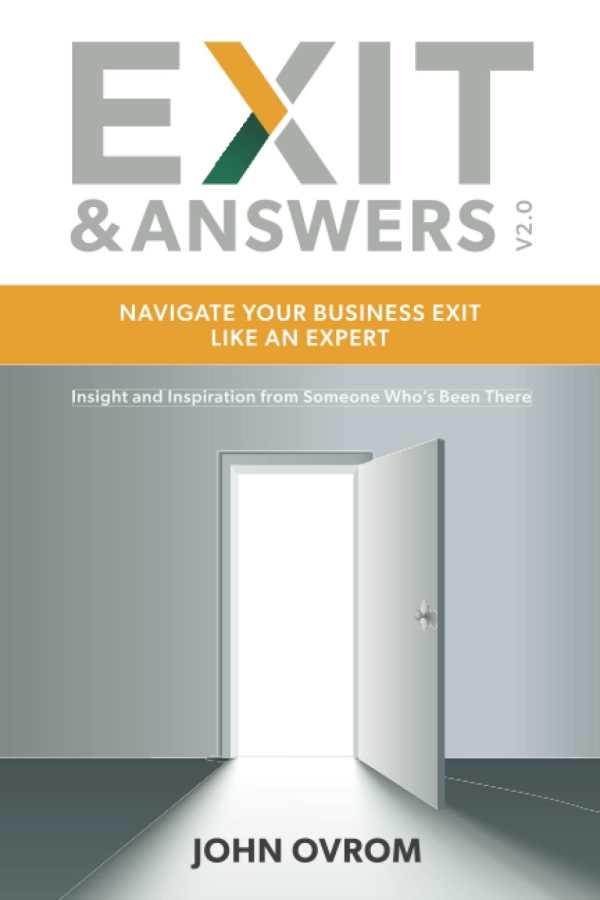Exit and Answers
Navigate Your Business Exit Like an Expert
The business guide Exit and Answers provides precise, organized strategies for executing a business exit.
John Ovrom’s business guide Exit and Answers contains valuable advice on the exit process for business owners.
Asserting that the exit process (which can, but does not always, entail the sale of a business) can be a positive experience, and that entrepreneurs should view it as a transition, this book seeks to answer five questions central to the process: whether the business can be sold, the price it can be sold for, what it will cost the owner to sell, the duration of the exit process, and the owner’s ultimate gain. These topics are addressed across three sections, and in a methodical way.
The book first deals with preliminaries, like the definition of one’s final goals, and evaluations of possible exit options. In its second third, it covers what preparations are needed for the sale process and the actual transaction. Later, it discusses what needs to happen after a sale. Throughout, the steps within each part of the process are numbered and summarized at the end of the chapters for clarity.
The math behind the book’s recommendations is illustrated in clear ways. There are keen discussions about important factors to consider, like a business owner’s ability to meet their personal expenses after the exit, available tax strategies prior to and after a sale, and accounting for a corporation’s budget. The text works to facilitate understanding on such topics, guiding the audience through the implementation of its advice. Further, diverse anecdotes covering business owners’ experiences humanize the material. One demonstrates the Employee Stock Option Plan as an exit strategy, another speaks to the importance of patience throughout the process, and another shows the value of building a business with the aim to sell it in the end. These interjections represent engaging breaks among the otherwise didactic content.
This book stands to serve a broad audience. It covers nuances related to sole proprietorship businesses, partnerships, and family businesses, showing which particular challenges each entity may face. It notes that business partners may prefer different exit options and explores strategies in response, and muses on developing a buy-sell agreement for family-owned businesses to avoid future disputes. Still, repetition exists around the book’s central concepts, including with its discussions of inside versus outside sales, and around the importance of viewing a business as an investment; this results in lulls in its progression. But the text is written in approachable, comprehensible terms, and it explains less familiar terms and topics in a considerate manner.
The business guide Exit and Answers provides precise, organized strategies for executing a business exit.
Reviewed by
Edith Wairimu
Disclosure: This article is not an endorsement, but a review. The publisher of this book provided free copies of the book and paid a small fee to have their book reviewed by a professional reviewer. Foreword Reviews and Clarion Reviews make no guarantee that the publisher will receive a positive review. Foreword Magazine, Inc. is disclosing this in accordance with the Federal Trade Commission’s 16 CFR, Part 255.

